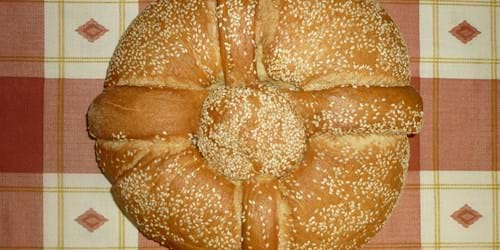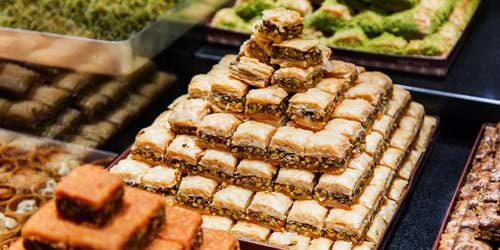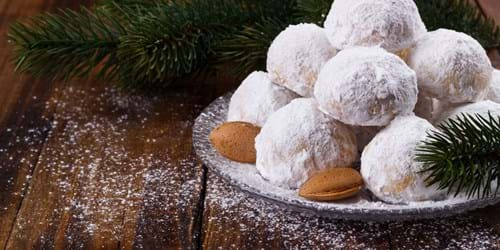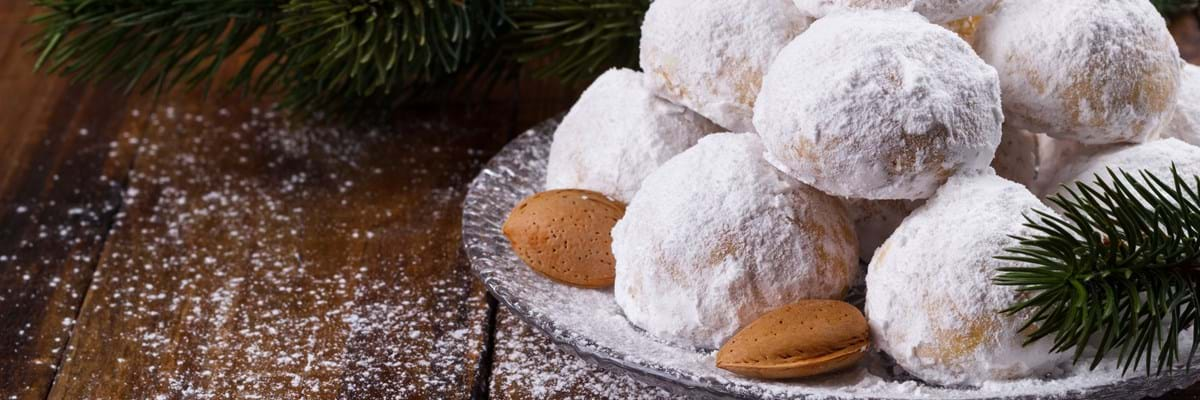Christopsomo
The heart of the Christmas Day feasting in Greece serves as both a decoration and a part of the meal – a round, cinnamon and orange loaf known as Christopsomo, or Christ’s Bread, and marked on the crown with a cross.
The delicious sweet bread may also be made with red wine and brandy, raisins, walnuts, nutmeg and cloves, and families will take pride in its baking, perhaps topping it with shapes in dough related to their lives and interests. (See our article about wine in Crete).
When the time comes to cut the bread – some families will eat it after attending church on Christmas Eve – a prayer may be said, and each slice will be handed over with a blessing for a long life.

A Greek Orthodox tradition is to cut a tree branch and bring it inside to symbolise the entry of Jesus into the life of the home, and another is to scatter straw in the house to represent the manger of Bethlehem.
While gift-giving for children is not part of the Christmas Day activities – they have to wait until January 1 to receive their parcels from St Basil – people with Christmas-related names like Emanuel or Christina may be lucky enough to receive ‘birthday’ presents.
The Christmas feast is especially enjoyable for the more religious families, who will practise some fasting during Advent, avoiding meat, dairy products and eggs. The meal on December 25 may start with a chicken and rice soup before a sumptuous dinner of lamb, pork, goat or goose, with turkey growing in popularity.
Stuffing
Most of us love some stuffing with our Christmas meal, and you won’t be disappointed in Greece, where the recipes commonly include chestnuts, pine nuts, cinnamon and rice, as well as pork stuffing with prunes. A good selection of vegetables, including stuffed cabbage leaves and roast potatoes, is sure to accompany the main dish. A cheese and spinach pie might add to the choice.
Sweets
The familiar sweet, sticky pastry baklava is likely to be on offer as well as nutty, shredded filo kataifi and light, thin diples (or thiples) which originate from the Peloponnese, made of thin sheet-like dough, they are folded into bow shapes, dipped in syrup and fried.

Pomegranates
Pomegranates also often feature in festive meals as a traditional symbol of prosperity – and they are not so heavy on the calories (although who’s counting on Christmas Day?).
Kourambiethes cookies
The flavours of orange, cinnamon and cloves are also put to sweeter use in melomakarona, egg-shaped biscuits coated in honey and walnut pieces, while the buttery kourambiethes cookies are rolled in powdered sugar and look like snowballs.

The Greek islands have their own traditional Christmas twists, with Crete, for instance, favouring fried or baked cheese pastries, and Ionian islanders tucking into a glistening, syrup-soaked, spiced walnut cake.
At New Year, the Vasilopita is cut at midnight. This lucky new year's cake has a coin hidden inside and a piece is cut for each member of the family. The person who finds the coin is said to be blessed with good luck for the rest of the year.




